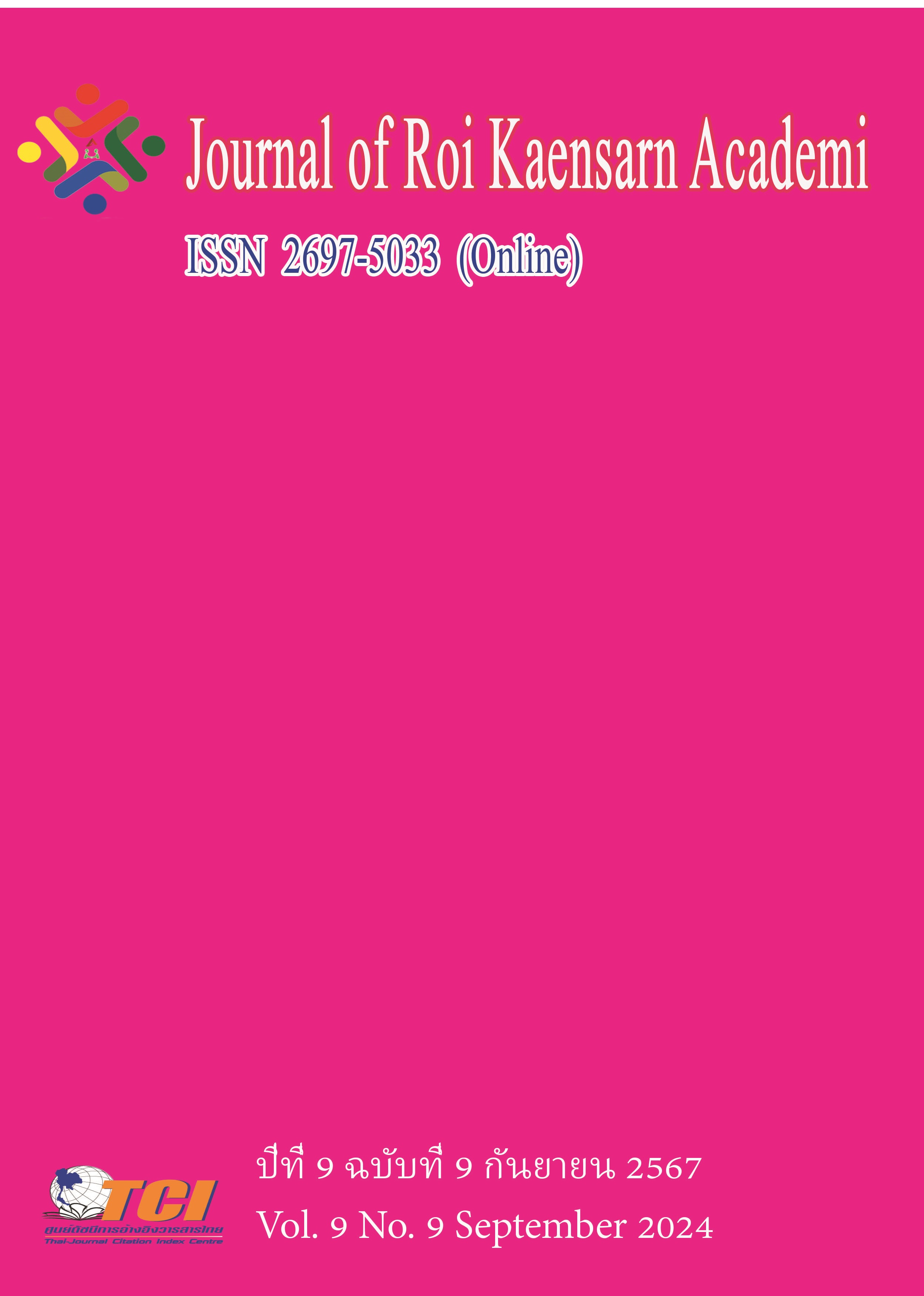The Artistic Influence of Han Dynasty Stone Relief Art on Contemporary Chinese Art Creation
Main Article Content
บทคัดย่อ
This research aims to explore the influence of Han Dynasty stone relief art on contemporary Chinese art creation. The study focuses on analyzing how ancient aesthetic concepts, artistic forms, and techniques have been adopted or adapted by modern Chinese artists. The research sample consists of 20 contemporary Chinese artists selected through purposive sampling, ensuring their direct engagement with traditional Chinese art forms. The research instruments include semi-structured interviews, case study analysis of selected artworks, and a comprehensive literature review. Data collection involved interviews with artists, high-resolution imagery of artworks, and archival research. Data analysis was conducted using qualitative content analysis to identify recurring themes and patterns related to the influence of Han Dynasty stone relief art.
The research results found that Han Dynasty stone relief art has significantly impacted contemporary Chinese art in three key areas: aesthetic concepts, artistic forms, and techniques. Contemporary artists have drawn inspiration from the harmony between humans and nature, the use of simple and powerful lines, and multi-layered compositions, integrating these elements into modern creative practices. This study contributes to a deeper understanding of the cross-temporal dialogue between ancient and contemporary art, emphasizing the continued relevance and influence of traditional Chinese cultural elements in modern artistic expressions.
Article Details
เอกสารอ้างอิง
Wang Yi. (2016). Examining Han Dynasty Folk Beliefs Through Han Dynasty Stone Reliefs. Liren: Teachers, (10), 149-149.
Ding, Z. (2020). The penetration of environmental awareness into contemporary art creation: An analysis of reconstructing landscapes: Research on Chinese contemporary ecological art trends. Environmental Protection, (13), 60. https://doi.org/10.14026/ j.cnki.0253-9705.2020.13.010
Lu, P. (2021). The historical process and marketization trends of Chinese contemporary art. Beijing Book Co. Inc.
Liu, L., & Huang, F. (2016). The lost content: The dilemmas of Chinese contemporary art development. Art Work, (05), 4-6.
Liu, Y. (2008). An analysis of the current status and development trends of Chinese contemporary easel painting. Art Research, (01), 118-119.
Pan, C. (2024). Aesthetic study of Han Dynasty stone reliefs. Collection, (03), 41-43.
Wang, N. (2017). The ideal space of Han culture: The aesthetic significance of spatial layout in Han Dynasty stone reliefs. Art Hundred, (01), 205-208.
Wei, S. (2023). Aesthetic research on the music and dance images in Western Han Dynasty stone reliefs. Journal of Taiyuan Normal University (Social Science Edition), (03), 76-81.
Xie, H. (2019). The activation of tradition and the "transcendence" of Chinese contemporary art: The significance and implications of Fu Xinmin's art creation. Shanghai Culture, (08), 110-118+158.
Xiao, F., & Ren, J. (2004). The "Chinese way": An important cultural phenomenon in Chinese contemporary art. Journal of Central China Normal University: Humanities and Social Sciences, 43 (1), 113-118.
Yang, S. (2020). Exploring early Daoist thought in the Han Dynasty stone reliefs from Xuzhou. Chinese Daoism, (05), 8-13. https://doi.org/10.19420/j.cnki.10069593.2020.05.002
Li H. (2023). Interdisciplinary Teaching of Junior High School Art under Chinese Traditional Culture: A Case Study of "Han Dynasty Stone Reliefs" Teaching. Middle School Curriculum Guidance, (31), 99-101.

